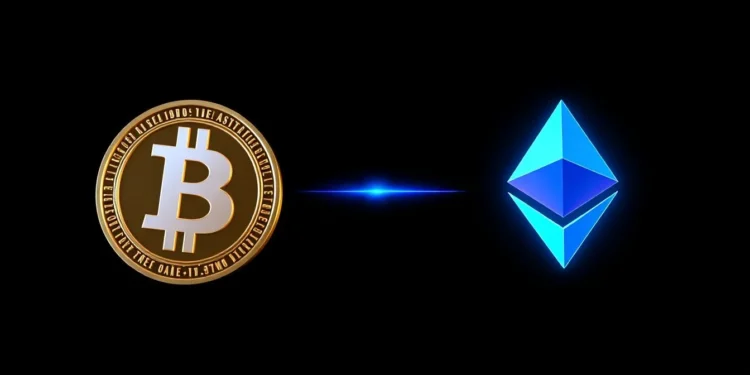Bitcoin and Ethereum are the two titans of the cryptocurrency world—each designed with a distinct purpose. Bitcoin is celebrated as a store of value, often dubbed “digital gold,” while Ethereum powers decentralized applications with its smart contract functionality. But what happens when you combine the power of both? Enter Tokenized Bitcoin on Ethereum—a growing trend that bridges the best of both ecosystems.
In this blog, we’ll walk you through what tokenized Bitcoin is, how it works on Ethereum, why it’s important, and the popular options available today. Whether you’re a crypto enthusiast or a DeFi beginner, this guide breaks things down simply.
What is Tokenized Bitcoin?
Tokenized Bitcoin refers to a version of Bitcoin that exists on other blockchains, particularly Ethereum, in the form of ERC-20 tokens. These tokens are pegged 1:1 to the actual BTC, meaning each tokenized BTC is backed by a real Bitcoin locked up somewhere else.
You can’t just use Bitcoin directly on Ethereum because the two blockchains speak different languages. Bitcoin isn’t natively compatible with Ethereum’s smart contracts, which limits its use in the Ethereum-based decentralized finance (DeFi) ecosystem.
So, tokenization was the solution: wrap BTC in a way that it becomes usable on Ethereum while maintaining the value of Bitcoin.
Why Tokenize Bitcoin on Ethereum?
Here are a few reasons why people are excited about tokenized Bitcoin:
1. DeFi Access
Ethereum is home to most of the DeFi protocols—like Uniswap, Aave, and Compound. Tokenizing Bitcoin allows BTC holders to participate in lending, borrowing, yield farming, and other DeFi opportunities without selling their Bitcoin.
2. Increased Liquidity
By bringing Bitcoin to Ethereum, users can provide liquidity to pools and increase the total value locked (TVL) in DeFi. This helps improve market efficiency and boosts trading options.
3. Interoperability
Tokenized Bitcoin creates a bridge between the Bitcoin and Ethereum networks, fostering collaboration and value transfer across chains.
4. Programmability
Unlike Bitcoin, Ethereum supports smart contracts. Tokenized BTC can interact with Ethereum’s programmable ecosystem, enabling more complex and automated financial applications.
How Does Tokenized Bitcoin Work?
Tokenized Bitcoin isn’t created out of thin air. The process typically follows these steps:
1. Deposit Real BTC
You send your Bitcoin to a custodian or smart contract that locks it up. This BTC is held as collateral and cannot be moved unless the token is burned (destroyed).
2. Mint Tokenized BTC
Once the real BTC is secured, a corresponding ERC-20 token—like WBTC (Wrapped Bitcoin)—is minted on Ethereum. This token represents your Bitcoin on Ethereum.
3. Use on Ethereum
You can now use your tokenized Bitcoin in various Ethereum-based applications—trading on DEXs, earning interest, or using it as collateral.
4. Redeem BTC
If you want your original Bitcoin back, you send your tokenized BTC to the smart contract or custodian, who then burns the token and releases the equivalent amount of real BTC to you.
Popular Tokenized Bitcoin Projects on Ethereum
Several tokenized Bitcoin options exist, each with different mechanisms and levels of decentralization. Here are the most well-known:
1. Wrapped Bitcoin (WBTC)
- Launch Year: 2019
- Custodian: BitGo
- Mechanism: Centralized
- Market Share: Largest in terms of supply
WBTC is the most widely used tokenized BTC on Ethereum. It’s fully backed 1:1 with Bitcoin held in custody by BitGo, and the minting process is managed by trusted merchants. While it’s efficient, it is centralized, which can be a tradeoff for some users.
2. renBTC
- Launch Year: 2020
- Custodian: Smart contracts via RenVM
- Mechanism: Semi-decentralized (paused as of late 2022)
renBTC aimed to be a more decentralized version of WBTC. It used a network of nodes to lock BTC and mint renBTC on Ethereum. However, due to the shutdown of the original Ren protocol (after being acquired by Alameda Research), its usage has significantly declined.
3. tBTC
- Launch Year: 2020 (v1), 2023 (v2)
- Custodian: Fully decentralized via Keep Network
- Mechanism: Decentralized
tBTC is designed to be fully trustless and decentralized. Unlike WBTC, there’s no central custodian—BTC is held by a network of bonded nodes. This model offers strong decentralization but has historically faced technical challenges.
4. sBTC (Synthetic BTC)
- Platform: Synthetix
- Mechanism: Synthetic asset backed by collateral
- Key Feature: Doesn’t require actual BTC to be locked
sBTC is not backed by real Bitcoin but is instead a synthetic asset tracking the price of BTC. While useful for price exposure, it lacks the 1:1 BTC backing and redemption.
Tokenized Bitcoin vs Real Bitcoin
Here’s a side-by-side comparison:
| Feature | Real BTC | Tokenized BTC on Ethereum |
|---|---|---|
| Blockchain | Bitcoin | Ethereum |
| Use Cases | Store of value, payments | DeFi, smart contracts |
| Transfer Speed | ~10 minutes per block | ~15 seconds per block |
| Smart Contract Support | No | Yes |
| Custody Risk | Native | Varies (custodian or smart contract) |
Use Cases for Tokenized Bitcoin
So what can you do once you have Bitcoin in tokenized form on Ethereum?
Lending & Borrowing
Use tokenized BTC as collateral on protocols like Aave or Compound to borrow stablecoins or earn yield by lending.
Liquidity Provision
Provide liquidity on decentralized exchanges like Uniswap, Balancer, or Curve. This enables you to earn trading fees and farming rewards.
Trading
Swap tokenized BTC for other assets directly on DEXs without needing a centralized exchange.
Derivatives & Yield Farming
Participate in synthetic markets or structured products that offer higher returns through yield strategies.
Risks of Tokenized Bitcoin
While tokenized BTC offers new opportunities, it’s not without risks:
Custodial Risk
In centralized models like WBTC, you’re trusting a custodian to actually hold your BTC. If they mismanage funds or get hacked, your token could become worthless.
Smart Contract Risk
Decentralized protocols are only as secure as their code. Bugs, exploits, or vulnerabilities in smart contracts could lead to token loss.
Regulatory Risk
Since custodians often handle large reserves of BTC, they could be targets of regulation, seizure, or compliance actions.
Conversion Delays
Converting back to real BTC may involve delays, especially during high network congestion or manual verification.
The Future of Tokenized Bitcoin
Tokenized Bitcoin represents a key step toward multi-chain interoperability and capital efficiency in the crypto space. As Ethereum and other smart contract platforms continue to grow, there’s increasing demand for stable, secure representations of BTC in these ecosystems.
With the rise of Layer 2 solutions like Arbitrum, Optimism, and zkSync, we may also see tokenized Bitcoin used more on L2s for lower fees and faster transactions.
Furthermore, decentralized solutions like tBTC and newer experimental models are improving, offering alternatives to the centralized custodial model. As security and user trust improve, we can expect broader adoption across DeFi protocols.
Final Thoughts
Tokenized Bitcoin on Ethereum brings together the strength of Bitcoin’s value with the flexibility of Ethereum’s smart contracts. It unlocks powerful use cases in decentralized finance, allows BTC holders to earn yield, and fosters greater collaboration across blockchain ecosystems.
However, like any innovation in crypto, it’s essential to understand the tradeoffs—whether it’s centralization, risk exposure, or technical complexity.
If you’re a Bitcoin holder looking to do more than HODL, tokenized BTC could be your gateway to DeFi. Just make sure to do your research, understand the mechanism behind the token you choose, and manage risk wisely.
Join Us : Twitter | Website | GitHub | Telegram | Facebook | YouTube

























